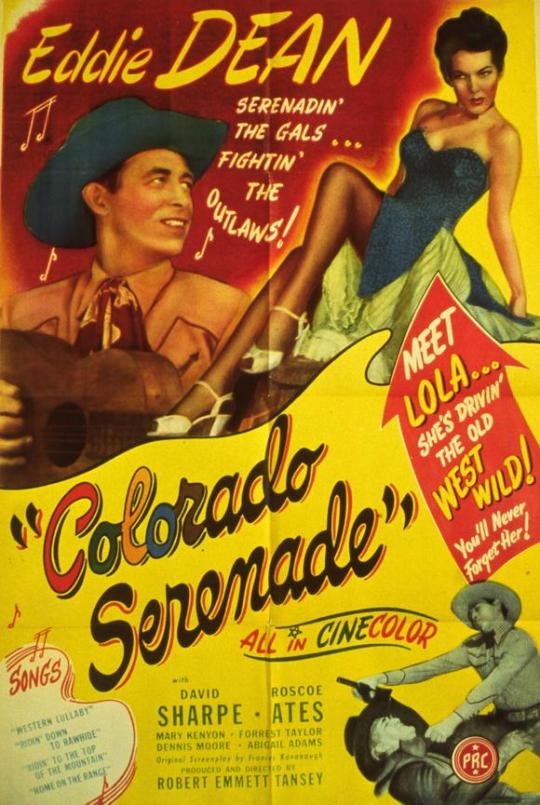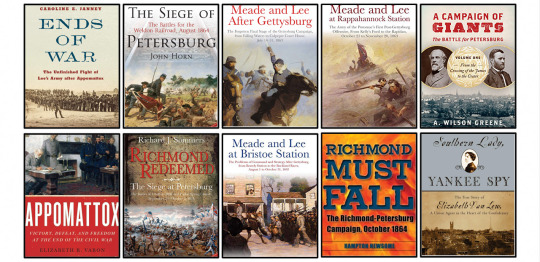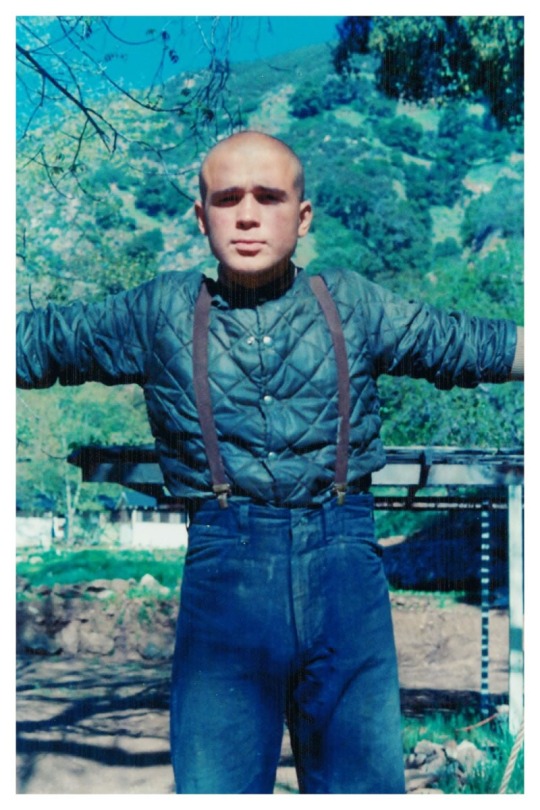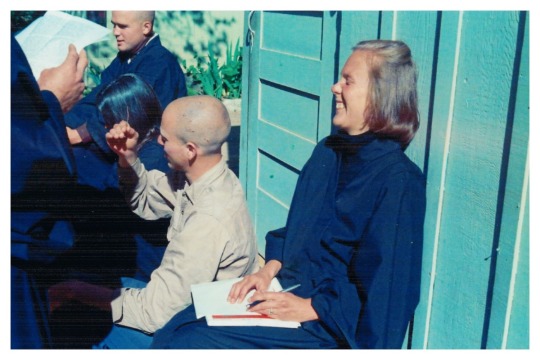#Lew Richmond
Explore tagged Tumblr posts
Text
thank you @ariestip for tagging me! some books i want to read in 2025:









my to read for 2025 is v nonfiction heavy, but i’ve been interested in these for a while🥹
I’m really hoping to learn more about Mary Richards/Bowser in Liar Temptress Soldier Spy, though I believe her section unfortunatelyfocuses more on the spymaster Bet Van Lew. But I’m really deeply intrigued by Mary. After she was freed as a child, Van Lew funded her education in the North and then in Liberia. She returned to Richmond in 1861 and volunteered to be one of Van Lew’s agents, risking going undercover as an enslaved woman to get access to Confederate records. On at least one occasion, she broke into the Confederate White House to get classified documents (including on military movements) to send to the Union under guise of collecting laundry. Genuinely one of the most remarkably brave women I’ve heard of, whom we unfortunately have very few records on. so hopefully i learn some more in depth stuff on her 🙏
I’m still unable to find a copy of Guerrilla Leader, but they were talking it up so much in the Behind the Bastards episode that I am persisting in trying to find one lol.
we’ll see if I get through all of these, but I hope so!
tagging @sleeplesslark @emillians @footnoteinhistory @megkuna @unit-1312 @jurassicpark1990 @c-lamprey : what are some books y’all are hoping to read next year?:)
#its been a while since i read le carré but im in an espionage mood#also jasmyn ward is a hell of a writer so have been wanting to read for a while on that#tag games#pls answer if u wish;;; i would love to know!! ive had these NF books piling on my to read list but i need Fresh Recs as well;;;
7 notes
·
View notes
Text
ELIZABETH VAN LEW // ABOLITIONIST
“She was an American abolitionist and philanthropist, born 1818. Created and operated an extensive spy ring for the Union Army during the American Civil War. When her father died, she and her mother freed the family's slaves nearly twenty years before the law required it. She used all of her inheritance to purchase and free some of their relatives. During the war, she helped prisoners escape and passed on information about Confederate troop movements to Union commanders. She hid escaped Union prisoners and Confederate deserters in her own house. She was the first person to raise the United States flag in Richmond, Virginia. She became postmaster general of the city. Many southerners regarded her as a traitor and she was ostracised. (I am] held in contempt & scorn by the narrow minded men and women of my city for my loyalty ... Socially living as utterly alone in the city of my birth, as if I spoke a different language.'”


2 notes
·
View notes
Text

Maggie Lena Walker (July 15, 1864 – December 15, 1934) was a teacher and businesswoman. She was the first African American woman to charter a bank and serve as its president in the US. She achieved success with the vision to make tangible improvements in the way of life for African Americans and women. Disabled by paralysis and limited to a wheelchair, she became an example for people with disabilities.
Along with her leadership of the Independent Order of St. Luke, she was involved with the NAACP, The National Association of Colored Women, the National Urban League and National Negro Business League, and the United Order of Tents.
Her restored and furnished home in the historic Jackson Ward neighborhood of Richmond, Virginia has been designated a National Historic Site, operated by the National Park Service.
She was born and raised in Richmond, the daughter of Elizabeth Draper and Eccles Cuthbert. Her mother, a former enslaved was an assistant cook at the Van Lew estate, where she met Cuthbert, an Irish American journalist for the New York Herald.
In 1902, she published a newspaper for the organization, St. Luke Herald. She chartered the St. Luke Penny Savings Bank. The St. Luke Penny Savings Bank’s leadership included several female board members. She agreed to serve as chairman of the board of directors when the bank merged with two other Richmond banks to become The Consolidated Bank and Trust Company, which grew to serve generations of Richmonders as an African-American-owned institution.
She married Armstead Walker Jr. (1886–1914), a brick contractor. They adopted a daughter, Polly Anderson, and had three sons. They purchased a home in 1904 at 1101⁄2 East Leigh Street, within the African American Jackson Ward neighborhood of Richmond. It was enlarged over the years to accommodate their children’s families. #africanhistory365 #africanexcellence #zetaphibeta
1 note
·
View note
Text
i’m doing a 10 minute podcast on an unknown topic for my apush class and i’m absolutely devastated by the time limit
i just learned that it’s specifically van lew’s intelligence and her spy network that advised Butler to attack richmond from the west, which was a vital move contributing to the success of its capture
i wish we didn’t have a time limit :((
1 note
·
View note
Text
On August 20, 1901, she delivered a now-famous speech before the Independent Order’s council in which she declared her vision to take the organization to greater heights by creating a conglomerate: a bank chartered and operated by the order’s members, a newspaper to herald the good news of the order, and a department store run by black employees and geared to black consumers with goods they wanted at more affordable prices than those of white retailers. It was through this consolidation of communication, money, and industry that the African American community could become economically independent, mobilized, and self-sustaining. Within five years, Walker guided each of these enterprises to fruition.
–
The Saint Luke Emporium, the retail arm of Walker’s three-part conglomerate that offered African American women opportunities for work and the Black community access to cheaper goods, struggled from its beginnings. As a result of organized opposition from white retailers and reluctance from Black consumers who continued to patronize white businesses (perhaps fearing repercussions if they did not), the emporium could not make money and was forced to close its doors in 1911.

#black history facts#Maggie Walker#The Saint Luke Emporium#She was the first Black Woman Bank President though!#black history#black women leaders#Amazing Black women#Virginia history#Richmond#Virginia
76 notes
·
View notes
Photo










#Reb Anderson#Jack Elias#Amy Richmond#Lew Richmond#Mel Weitsman#Dorris Griffin#David Chadwick#Bob Halpern#Tesshu Araki#Craig Boyan
0 notes
Text
Crowdfunding Spotlight: This Comic is Haunted
Check out the latest project from the The77 Publications, a great-looking horror anthology
This Comic is Haunted is the latest anthology project to be announced from the The77 Publications, which hit Kickstarter like a train and was fully backed in just seven days – but there’s still time to lend this horror comic your support. This Comic is Haunted #1 Cover by Ian Stopforth The first issue will be officially launched at the Birmingham I.C.E comic convention on 10th September 2022,…

View On WordPress
#Alan Hebden#Andrew Richmond#Bambos Georgiou#Catherine Wild#Dave Heeley#downthetubes News#Gary Burley#Horror Comics#Ian Stopforth#Jo Heeley#Lee Millmore#Lew Stringer#Mark Maren#The77 Publications#This Comic is Haunted
2 notes
·
View notes
Photo






Avengers vs. the Squadron Supreme
Avengers #85 - "The World is Not for Burning!" (1971) written by Roy Thomas art by John Buscema & Frank Giacoia
#avengers#squadron supreme#scarlet witch#marvel#vintage comics#vision#hawkeye#quicksilver#american eagel#lady lark#nighthawk#tom thumb#wanda maximoff#clint barton#pietro maximoff#james dore jr#linda lews#kyle richmond#thomas thompson#wyatt mcdonald
65 notes
·
View notes
Photo

Recent Acquisition - Postcard Collection
Van Lew Mansion, 23rd and Grace Streets, Richmond, Va.
15 notes
·
View notes
Quote
Sharpe himself gave most of the credit for the Bureau's successes in the months before Lee's surrender at Appomattox in April 1865 to an agent network in the Confederate capital of Richmond, Virginia, run by Elizabeth Van Lew, an ardent abolitionist who had persuaded her mother to free the family slaves. For most of the previous year Van Lew had maintained five intelligence 'depots' around Richmond, where her agents delivered reports for collection by Union couriers slipping through Confederate lines. The agents included her African-American servants, who concealed messages in eggshells hidden among real eggs and in seamstresses' paper patterns. To protect her agents from post-war retribution in Richmond, Van Lew destroyed the intelligence reports which she had asked the War Department to return to her. Though, as a result, little detailed evidence survives, she was probably the most successful female spy of the mid-nineteenth century. Financing the agent network out of her own pocket cost 'Miss Lizzie' most of her fortune. After the War, Grant tried and failed to persuade Congress to refund $15,000 which she had secretly spent in the Union cause. When he became President four years later, in order to provide her with an income Grant made her Richmond postmaster, then one of the highest federal posts available to a woman. The Richmond Enquirer and Examiner declared the appointment of 'a Federal spy' a 'deliberate insult to our people'. Grant's successor, President Rutherford B. Hayes, failed to reappoint her. Though Van Lew later worked for a few years in Washington, she died in Richmond as a recluse, 'shunned like the plague'.
Christopher Andrew, The Secret World
#quote#quotation#Christopher Andrew#Elizabeth Van Lew#spy#agent#American Civil War#abolitionist#President Grant#President Hayes#Richmond
7 notes
·
View notes
Text
Colorado Serenade 1946

#colorado serenade#eddie dean#roscoe ates#david sharpe#mary kenyon#forrest taylor#dennis moore#abigale adams#warner richmond#lee bennett#robert mckenzie#john bridges#johnny carpenter#jack evans#herman hack#charles king#lew morphy#a l smith#jack tornek#westerns#western movies#western#westernmovies#western movie#tv shows#tv series
14 notes
·
View notes
Text
Mary Elizabeth Bowser - Slave and Union Spy -#womenshistorymonth

Mary Elizabeth Bowser, was born Mary Jane Richards, on May 17, 1846, near Richmond, Virginia. She was born a slave to the Van Lew family, Eliza Baker and John Van Lew, of Richmond, Virginia.
Records show that Mary was baptized at St. John’s Church, the white congregation of the Van Lew family, as opposed to the First African Baptist Church in Richmond. This fact proves that Mary was treated differently by the Van Lew family from birth.

When she was of age, Eliza and John’s daughter, Elizabeth, sent Mary north to get an education. In 1855, she sent her to Liberia for missionary work and she did not return to the Van Lew home until 1860 again.
A few days after the battle of Fort Sumter, Mary married Wilson Bowser on April 16, 1861, in the same church she was baptized in. The Civil War had just begun.
During the war, Mary was instrumental in helping Elizabeth with her spy operation and aided her in helping escaped slaves take refuge in the Van Lew mansion. Mary, as well as many of the slaves freed by the Van Lew family, completed dangerous missions to get information to General Grant about the movements of the Confederate army. Mary even managed to obtain a position as a servant in the household of Jefferson and Varina Davis. She worked directly for Varina Davis and managed to learn about important strategies and plans of the Confederate government.
Soon after the war, Mary Bowser worked as a teacher to freed slaves in Richmond and, in 1867, founded her own school in Georgia. She alone taught young children and adults, all former slaves, to read and write.
A letter survived dated June 1867, from Mary to the superintendent of education, stated her new name as Mary Garvin, and the intention that she would be joining her new husband in the West Indies.
The year of her death is unknown, but a memorial plot was placed in her memory at Woodland Cemetery in Richmond, Virginia. It honors her memory as an agent who helped save the Union. The stone reads, “Mary Elizabeth Bowser, Born 1840, Union Military Intelligence Agent, She risked her life and liberty so that all could know freedom.”


52 notes
·
View notes
Text

Meet Mary. She was Free, Educated and A Spy. Her Disguise… Confederate European House Slave!
Mary was the best as she was working right in The Confederate President’s home. She had a photographic mind. Everything Mary saw on the Rebel President’s desk, she could repeat word for word.
"Ellen Bond" was neither dim-witted, illiterate, nor a slave. In reality, she was a free, well-educated African-American woman by the name of Mary Elizabeth Bowser. And she was a Union spy working right under Confederate President Jefferson Davis’s nose.
For months during the most crucial period of the Civil War, as General Ulysses S. Grant maneuvered to capture Richmond, the Confederate capital, Mary supplied critical military intelligence to the Union army. In recognition of her contributions to the Union war effort, she was inducted into the U.S. Army Military Intelligence Hall of Fame in 1995.
Elizabeth was able to arrange for a friend to take Mary with her as a servant to help at social functions held by Varina Davis in the Confederate White House. Mary performed her servant role so well she was eventually taken on full time as, presumably, a slave hired out by her master.

As a spy, Mary enjoyed a significant advantage: invisibility. It’s not that she was unseeable, like H. G. Wells’ Invisible Man, but rather that as a black slave, she was unseen and unnoticed by the whites she served. Her entrance into the dining room to serve at table in no way affected the conversations Jefferson Davis might be having with visiting generals. When she went to his office to clean, it did not occur to the Confederate president that this seemingly ignorant and dull-witted African woman could have either the capacity or the interest to glean information from the papers he left lying on his desk.
In fact, Mary’s role went far beyond the norm. Whatever she read or heard she was able to remember and pass on word-for-word. That’s the testimony of Thomas McNiven, the official head of the Richmond spy ring. McNiven ran a bakery and made daily deliveries all around the city, including to the Confederate White House. This allowed Mary to regularly meet with him for a few minutes as he delivered his goods to the Davis household. Years later, in 1904, McNiven recalled those days to his daughter and her husband, who eventually recorded his story:
Mary was able to continue her espionage activities until January of 1865. Jefferson Davis had become aware that information was somehow being leaked, and suspicion apparently began to fall on Mary. She made the decision to flee Richmond and seems to have made her way to the North. One unsubstantiated account says that in her last act as a Union agent, she tried to burn down the Confederate White House, but was unsuccessful.
Sometime in the early 1850s, Mary was sent to Philadelphia, as Elizabeth had been, to be educated at a Quaker school for African Americans. In 1855, with Mary’s schooling complete, Elizabeth arranged for her to join a missionary community in Liberia. Mary, however, hated living in the African country, and by the spring of 1860 was back in Richmond with Elizabeth.
A year later, in April 1861, Mary was married to Wilson Bowser, a free African man. Interestingly, the ceremony, like her baptism, took place at St. John’s Episcopal. The wedding notice listed both Mary and Wilson as “colored servants to Mrs. E. L. Van Lew” (Elizabeth’s mother).
271 notes
·
View notes
Text

Mary Richards (1840-1867) known as Mary Jane Richards Garvin and possibly Mary Bowser was a Union spy during the Civil War. She was possibly born enslaved from birth in Virginia, but there is no documentation of where she was born or who her parents were. By the age of seven, she was enslaved by the household of Elizabeth “Bet” Van Lew. The Van Lew family sent her to school, probably in Princeton, and to Liberia via the American Colonization Society. She returned to Richmond before the outbreak of the American Civil War, where she was one of many African American and white Richmond residents who collected and delivered military information to the Army.
She is often referred to as Mary Bowser. She was likely married to Wilson Bowser at the start of the Civil War.
The first record related to her is her baptism, as “Mary Jane” at St. John’s Church in Richmond, on May 17, 1846. Her baptism was at the Van Lew family church.
She participated in the pro-Union underground espionage ring organization. She engaged in a variety of pro-Union activities. She went, “into President Davis’s house while he was absent,” pretending to be getting laundry, to look for documents related to the war effort. The intelligence she collected is unknown, the value of this espionage ring was noted by Generals Benjamin Butler, Ulysses S. Grant, and George H. Sharpe.
She worked as a teacher to former enslaved. She founded a freedmen’s school in St. Marys, Georgia. Her school served day students, adult night students, and Sunday school students, all taught by herself. In a June 1867 letter to the superintendent of education for the Georgia Freedmen’s Bureau, she requested that he refer to her as Mary J. R. Garvin.
She gave at least two lectures in the North in 1865 about her education, travel to Liberia, and wartime exploits. She protected her identity by using pseudonyms at both lectures, calling herself Richmonia Richards at Abyssinian Baptist Church and Richmonia R. St. Pierre at the AME Church on Bridge Street. #africanhistory365 #africanexcellence
1 note
·
View note
Photo



Ok so that 2021 book list I mentioned earlier...it turned into 30 books because I have no self control 😬but here they are, my favorite books I read in 2021! And yeah, all of them civil war related cause what would you expect?
below the cut, I’ve included all the names with the authors so if you wanna check them out, you can!
Nothing But Victory: The Army of the Tennessee, 1861- 1865 (Steven E. Woodworth)
Raising the White Flag: How Surrender Defined the American Civil War (David Sikenat)
Thunder at the Gates: The Black Civil War Regiments that Redeemed America (Douglas R. Egerton)
American Brutus: John Wilkes Booth and the Lincoln Conspiracies
This Republic of Suffering: Death and the American Civil War (Drew Gilpin Faust)
The War of the Common Soldier: How Men Thought, Fought, and Survived in Civil War Armies (Peter S. Carmichael)
The Howling Storm, Weather, Climate, and the American Civil War (Kenneth W. Noe)
An Environmental History of the Civil War (Judkin Browning)
Meade at Gettysburg: A Study in Command (Kent Masterson Brown)
Lincoln on the Verge: Thirteen Days to Washington (Ted Widmer)
Major General George H. Sharpe and the Creation of American Military Intelligence in the Civil War (Peter G. Tsouras)
Radical Sacrifice: The Rise & Ruin of Fitz John Porter (William Marvel)
Midnight in America: Darkness, Sleep, and Dreams During the Civil War (Jonathan W. White)
Rites of Retaliation: Civilization, Soldiers, and Campaigns in the American Civil War (Lorien Foote)
Let Us Have Peace: Ulysses S. Grant and the Politics of War & Reconstruction, 1861 - 1868 (Brooks D. Simpson)
Sickles at Gettysburg: The Controversial Civil War General Who Committed Murder, Abandoned Little Round Top, and Declared Himself The Hero of Gettysburg (James A. Hessler)
Timothy B. Smith:
Champion Hill: Decisive Battle for Vicksburg
The Union Assaults at Vicksburg, May 17 – 22, 1863
The Siege of Vicksburg: Climax of the Campaign to Open the Mississippi River, May 23 – Jay 4, 1863
Caroline E. Janney:
Remembering the Civil War: Reunion & the Limits of Reconciliation
Ends of War: The Unfinished Fight of Lee’s Army After Appomattox
Elizabeth R. Varon:
Appomattox: Victory, Defeat, and Freedom at the End of the Civil War
Southern Lady, Yankee Spy: The True Story of Elizabeth Van Lew, a Union Agent in the Heart of the Confederacy
Jeffrey Wm Hunt:
Meade & Lee After Gettysburg: From Falling Waters to Culpeper Court House
Meade & Lee at Bristoe Station
Meade & Lee at Rappahannock Station
Petersburg campaign books:
The Siege of Petersburg: The Battles for the Weldon Railroad, August 1865 (John Horn)
Richmond Redeemed: The Siege at Petersburg, the Battles of Chaffin’s Bluff and Poplar Spring Church, September 29 – October 2, 1864
Richmond Must Fall: The Richmond Petersburg Campaign, October 1864 (Hampton Newsome)
A Campaign of Giants: The Battle for Petersburg Vol. 1 (A. Wilson Greene)
#my ramblings#self control? don't know her#also i love all these covers but that ricmond must fall cover lol#i love that book but the cover is just!! not great#2021 books
12 notes
·
View notes
Photo










#ikkyu sojun#Glenn Taylor Webb#Carol Webb#Dainin Katagiri#Mel Weitsman#Alan Marlowe David Chadwick Jane Westberg#Craig Boyan#Tesshu Araki#Mary Quagliata#Amy and Lew Richmond#Zenju Earthlyn Manuel#Kaishin Unique Holland#Kaishin Jiso#Jozen Shinmu#Jozen Tamori Gibson#MK Abadoo#Ganju Isshin#Shonin#myokei caine-barrett
2 notes
·
View notes